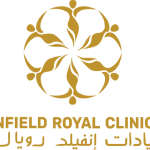Introduction
Weight loss can be a transformative journey, but it often leaves individuals with excess, loose skin, particularly around the abdominal area. This loose skin, also known as skin redundancy, can be a significant concern for many people who have successfully shed a considerable amount of weight. A Tummy Tuck Muscat, or abdominoplasty, is a surgical procedure designed to address this issue by removing excess skin and fat and tightening the underlying muscles. This article explores how a tummy tuck can help with loose skin after weight loss, including the process of the surgery, its benefits, and its characteristics.
Process
- Consultation and Planning:
- Initial Consultation: The journey begins with a consultation with a board-certified plastic surgeon. During this visit, the surgeon will evaluate your overall health, discuss your weight loss history, and assess the amount of loose skin and abdominal muscle separation.
- Preoperative Planning: If a tummy tuck is deemed appropriate, the surgeon will create a personalized surgical plan, which may include recommendations for preoperative preparations, such as lifestyle modifications and dietary adjustments.
- Surgical Procedure:
- Anesthesia: The procedure is typically performed under general anesthesia, ensuring that the patient remains unconscious and pain-free during the surgery.
- Incision: The surgeon makes a horizontal incision along the lower abdomen, usually below the bikini line, to minimize visible scarring. In some cases, a vertical incision may also be necessary, particularly in extensive skin removal.
- Removal of Excess Skin and Fat: The surgeon removes the excess skin and fat, reshaping the abdominal area. In cases where there is a significant amount of skin, the incision may extend from hip to hip.
- Muscle Repair: If the abdominal muscles are separated (diastasis recti), the surgeon will repair them by suturing the muscles back together, providing a firmer and more contoured appearance.
- Closing Incisions: The incisions are then closed with sutures, and the patient is typically dressed in a compression garment to support the healing process.
- Recovery:
- Immediate Postoperative Care: After the surgery, patients are monitored in a recovery area. Pain management and wound care are provided to ensure a smooth recovery.
- Home Care and Follow-Up: Patients are advised on how to care for their incisions and manage postoperative pain. Follow-up appointments with the surgeon are scheduled to monitor healing and address any concerns.
Benefits
- Improved Body Contour: A tummy tuck can significantly improve the appearance of the abdomen by removing excess skin and fat, resulting in a flatter, more toned stomach.
- Enhanced Self-Confidence: Many individuals experience a boost in self-esteem and confidence after a tummy tuck, as it helps them achieve their desired body shape following significant weight loss.
- Better Physical Comfort: Excess skin can cause discomfort, including chafing and irritation. A tummy tuck can alleviate these issues by removing the redundant skin, leading to greater comfort and ease in daily activities.
- Restored Abdominal Musculature: For individuals who have experienced abdominal muscle separation, a tummy tuck can restore muscle integrity, improving core strength and stability.
Characteristics
- Scarring: While the procedure can yield excellent results, it does leave a scar. However, the incision is strategically placed to be less noticeable, and over time, it tends to fade.
- Long-Term Results: The results of a tummy tuck are generally long-lasting, provided that patients maintain a stable weight and adopt a healthy lifestyle.
- Eligibility: Ideal candidates for a tummy tuck are individuals who are at or near their target weight, have stable weight and have realistic expectations about the outcomes.
- Combination with Other Procedures: Some patients choose to combine a tummy tuck with other procedures, such as liposuction or a body lift, to achieve comprehensive body contouring.
Conclusion
A tummy tuck can be an effective solution for addressing loose skin after significant weight loss. By removing excess skin, tightening the abdominal muscles, and improving body contour, this surgical procedure can offer both physical and psychological benefits. However, it is crucial for individuals considering a tummy tuck to consult with a qualified plastic surgeon to determine if they are suitable candidates and to understand the potential risks and outcomes. With proper planning and a commitment to a healthy lifestyle, a tummy tuck can help individuals achieve a more contoured, confident, and comfortable physique after their weight loss journey






Comments